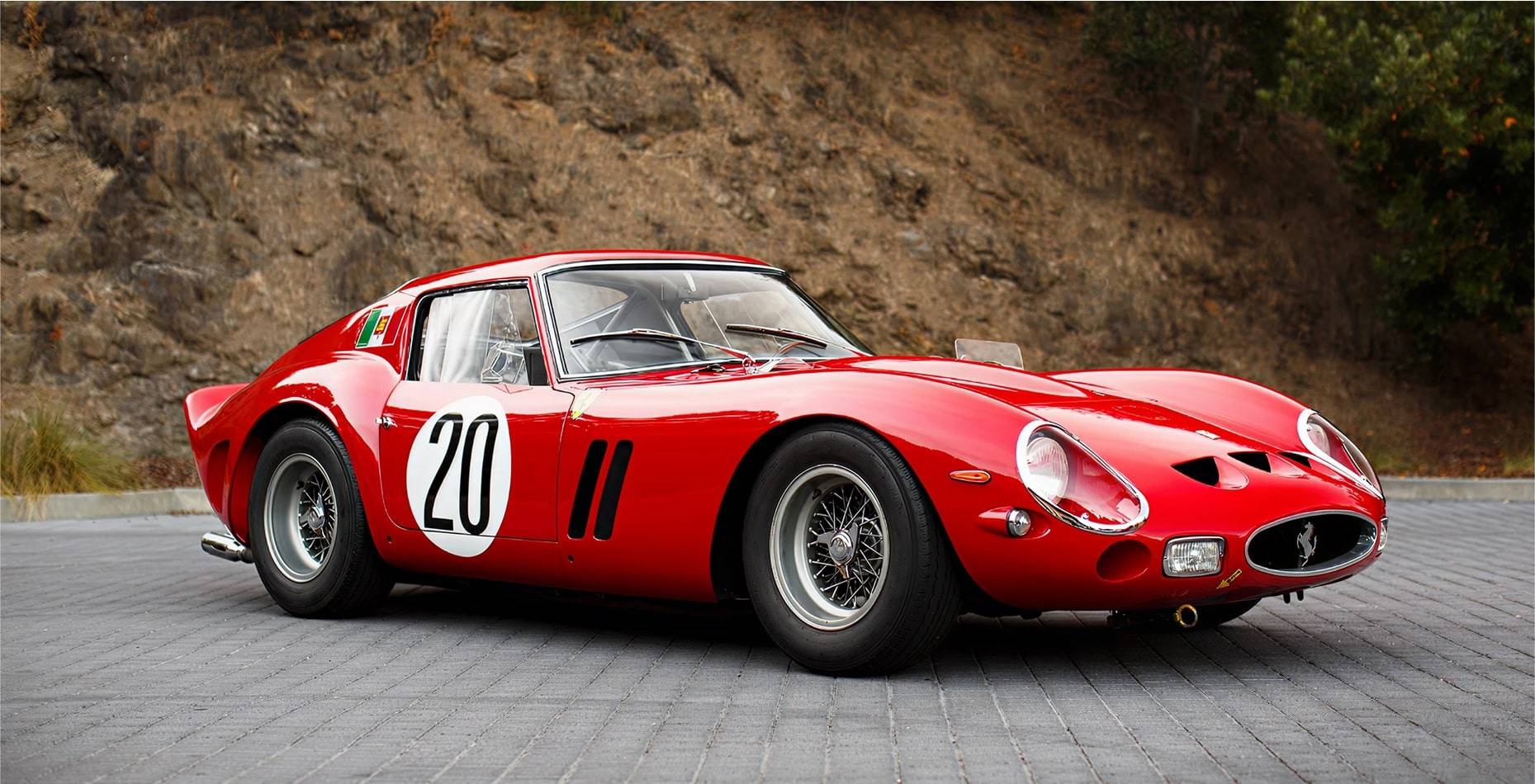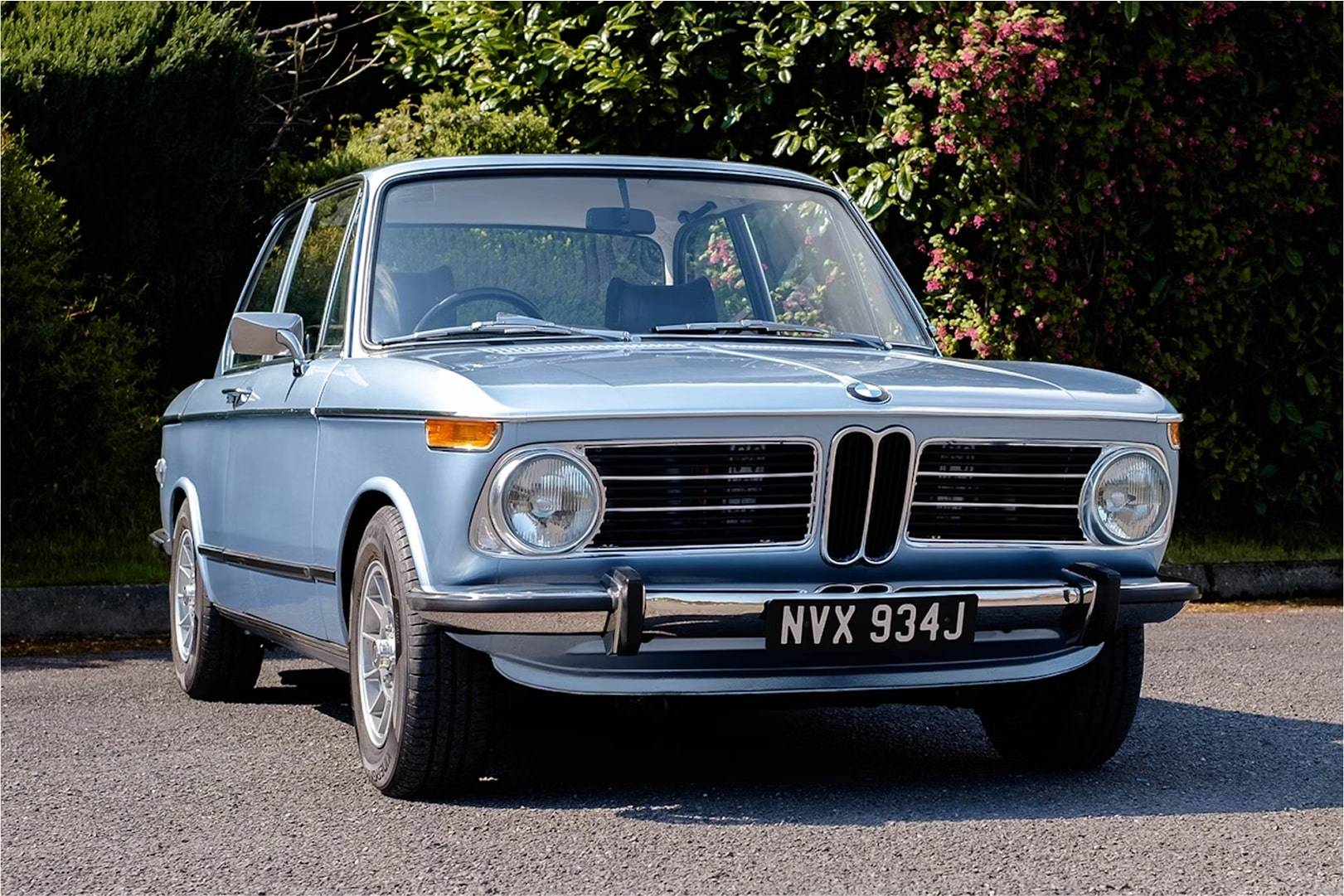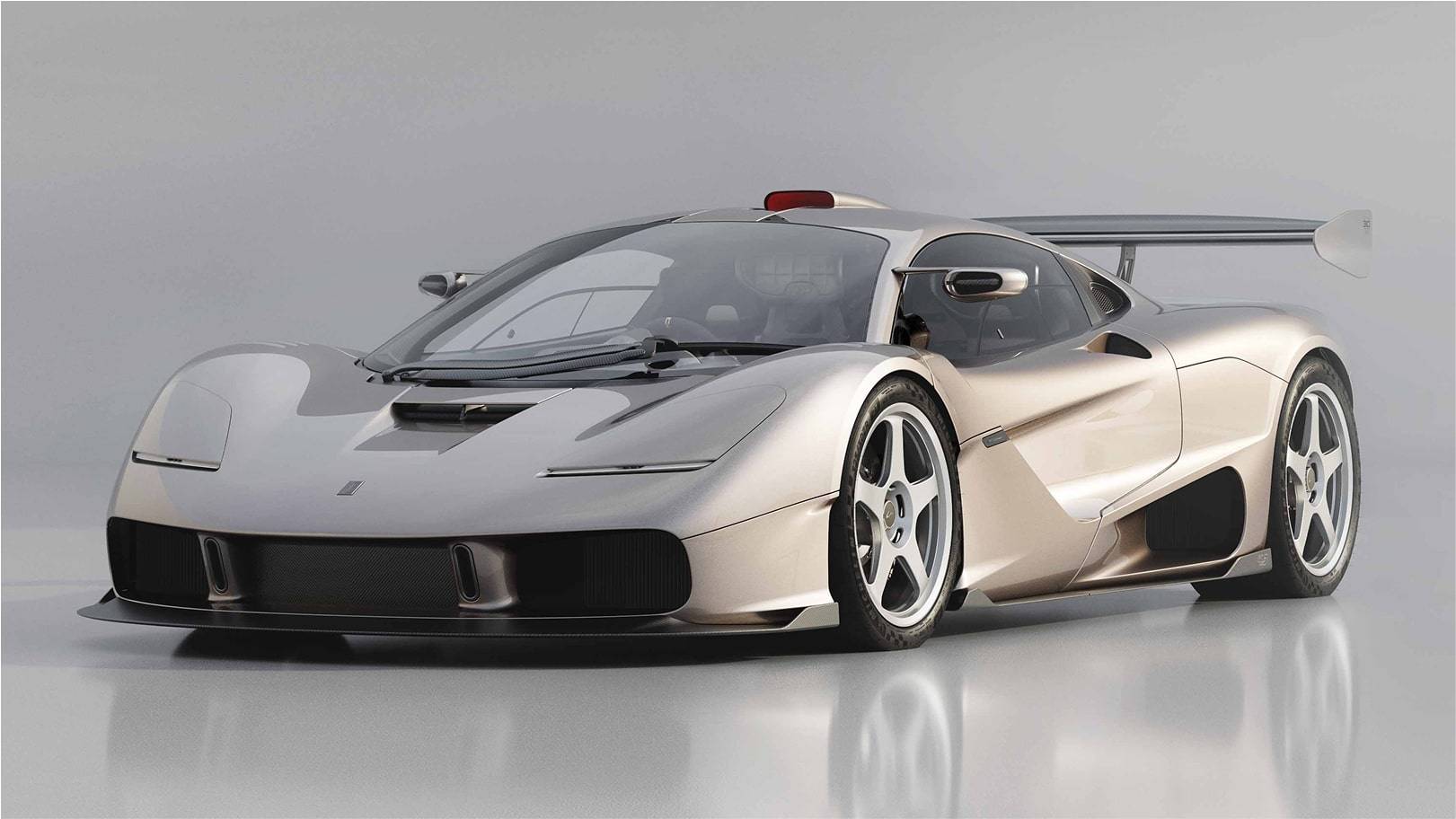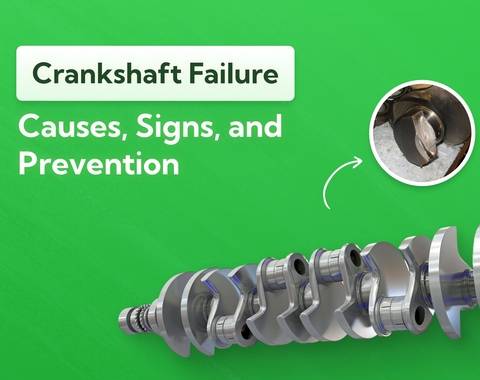How Rare is My Car? (2025 Guide)
Along with demand, rarity plays a tremendous role in how valuable a car is. Before you buy or sell, knowing its rarity vs its in-demandness will help you set the right asking price and maximise your profit. After valuing and purchasing more than 130,000 vehicles ourselves, we’ve created a guide to show you exactly how to do that.
Last updated: 17th October, 2025

Award-winning CEO driving growth and social impact across automotive, recycling, and technology-led enterprise platforms.

Listen to this story
If you're selling your car or buying a used car, your first question may be, "How old is this car?" or "How many miles does it have?" What you might not think of immediately is, "How many are out there just like it?"
Rarity is one of the most important details for a few reasons:
- Rare cars are sometimes more valuable (key word: sometimes).
- Rarity can affect insurance premiums.
- It directly impacts the availability of parts, making maintenance and repairs more difficult and expensive.
Before you go through with the transaction, it's wise to have a good understanding of how rare your car is.
Especially if your original plan was to scrap your car, in which case you’d be throwing away possibly hundreds of thousands of pounds.
What's in this article
- 1. Car rarity is not subjective.
- 2. Common cars can become rare over time.
- 3. Factors that determine a car's rarity
- 4. Car restorations, rarity and resale value
- 5. Are older cars always considered "more rare"?
- 6. Does a car's condition influence its rarity?
- 7. Are 'limited edition' models more valuable because they're rare?
- 8. Where to find data on car production numbers
- 9. How to check the rarity of your specific car model
- 10. What is the rarest car made in 2025?
- 11. How car rarity affects insurance costs
- 12. How car rarity affects resale value
- 13. How often do rarity evaluations for cars update?
- 14. Final thoughts
Car rarity is not subjective.
Unlike beauty, rarity is not in the eye of the beholder. It can be objectively measured and determined based on factors like production numbers, model year, trim level and colour.
That said, rarity is relative. For example, a car produced in smaller numbers than other cars from the same brand may be considered rare within its own lineup but not necessarily rare overall.
Similarly, luxury cars like Ferraris and Lamborghinis are less common overall, with just over 23,000 owners across the UK. But not all would be considered rare.
The Ferrari 488 Italia, for instance, has a worldwide production number of somewhere between 10,000 and 15,000, which is relatively high.
The LaFerrari, on the other hand, had a production number of just 499 and would therefore be considered extremely rare.

And that's nothing to the Ferrari 250 GTO, which only had 36 units ever produced and is valued at over £60 million.

Common cars can become rare over time.
Lots of cars, even those that are mass-produced, naturally become rarer as time passes, especially if they're designed to be driven every day. Since most people aren't car collectors, daily drivers will eventually become harder to find in good condition as they age and are driven more frequently.
For example, the 1970s BMW 2002tii was once a common sight on the roads because they were produced en masse.
However, since they were primarily used as passenger vehicles, most have since been driven into the ground or scrapped. Now, they're highly coveted by car enthusiasts.

What the experts say

Anthony Sharkey
Factors that determine a car's rarity
Technically speaking, a 'rare' car is one with limited production capacity. But there's more that goes into it than that.
Let's take a look at the different factors influencing your car's rarity:
Production volume
It's the first thing that comes to mind when we think of 'rarity'. How many cars were built?
Cars that are produced in small numbers are inherently rarer. As mentioned above, the Ferrari 250 GTO, with only 39 units ever made, is one of the most coveted cars in the world due to its extreme scarcity.
Similarly, special editions or variants with unique features are often produced in limited quantities, enhancing their rarity and appeal.
As a general benchmark: A car with a production volume under 1,000 units is considered extremely rare, while one with a production volume between 1,000 and 10,000 would be considered rare.
Survival rate
Of course, not all cars are intentionally rare. Some just don't survive the test of time.
The survival rate refers to the percentage of cars produced that still exist today. Factors like accidents, theft, neglect, natural disasters and everyday use contribute to the declining number of a particular model over time.
Technical innovation
Some cars are rare simply because they were never designed to reach the consumer market.
Prototypes, concept cars, and experimental models often have very low production numbers or were never mass-produced at all.
Some automakers, like Koenigsegg, produce extremely rare cars due to their focus on cutting-edge technology and design.
Production challenges
We’ve seen a car's rarity attributed to factors completely outside of the manufacturer's control. For example, if a car was produced during a war or economic downturn, production may have been halted or significantly reduced due to shortages of materials and labour.
Similarly, certain models get discontinued due to supply chain issues and government regulations. We’re going to see this with petrol and diesel models as the UK’s 2030 petrol and diesel ban gets nearer and nearer.
Vehicle ownership and historical significance
If a celebrity, dignitary, or historical figure owned a particular car, that immensely increases the value of that specific car. In a way, it's a one-of-one model, as rare as it gets.
For example, the Aston Martin DB5 driven by James Bond in the film Goldfinger sold for 5.77 million euros at auction due to its iconic status and ownership history. Even when it’s not the exact car, people are willing to pay more than £500,000 for that model.
Special modifications and variants
Some car manufacturers have released limited runs of special models with unique features or styling. These modifications may include performance enhancements, different engines, body kits, bespoke paint jobs and interior detailing.
The Shelby Mustang, which was a modified version of the Ford Mustang, is an example of a car that's highly sought after because of its limited production numbers and significant performance upgrades.
While the Mustang isn't a particularly rare car, that specific model most definitely is!
Car restorations, rarity and resale value
If you have a rare and sought-after car, know that potential buyers will be looking for exactly what is advertised: an original, unmodified car. Nothing else. In my personal experience, this is how it plays out 100% of the time.
High-quality restorations that use original parts and maintain the car's authenticity greatly increase its value. Those restored to their original factory specifications are highly prized among collectors and can command premium prices at auctions.
But selling a modified car can go both ways. Restorations that incorporate non-original parts or deviate from the car's original design can decrease its value. Collectors want vehicles that stay true to their historical and aesthetic roots.
Other modifications, like non-original paint colors or aftermarket parts, also negatively impact a rare or classic car’s value. Like body modifications, they detract from the car's historical integrity.
Are older cars always considered "more rare"?
Not necessarily. Some cars are considered rare because they were produced in limited numbers. Others are for their historical significance.
Consider the first-generation Honda NSX, a mid-engine sports car that was produced from 1990 to 2005. It's considered rare because of its advanced engineering, groundbreaking design, and limited production numbers compared to other sports car models.
Similarly, the last air-cooled Porsche 911s produced between 1994-1998 are worth a lot thanks to their unique design and historical significance as the final iteration of the air-cooled 911s.
Beyond that, older cars are harder to find due to natural wear-and-tear and disuse. But this in no way means they're automatically more valuable or desirable. In fact, most aren’t.
Does a car's condition influence its rarity?
The condition a car is in doesn't make it more or less rare. But it does have a profound impact on the resale value.
A car that’s…
- in pristine condition,
- with low mileage
- and a well-documented ownership history
…will always fetch a higher sale price than an identical model in poor condition.
This is especially true for rare cars, as their limited numbers make it even more difficult to find one in excellent condition.
Are 'limited edition' models more valuable because they're rare?
The short answer is, maybe. Limited edition models are produced in low numbers, making them more rare and desirable among collectors. However, their value also depends on factors like condition, unique features, and historical significance.
Some limited edition models, like the Ferrari Enzo or Lamborghini Centenario, have skyrocketed in value due to their limited production numbers and iconic status.
Others, like the 2002 Ford Thunderbird Neiman Marcus Edition, have not. Despite the vehicle's limited production run of just 200 units (and initial hype), its retro design failed to resonate long-term with collectors, causing it to depreciate over time.
Where to find data on car production numbers
There are two main reliable sources for detailed car production data for all the UK's licensed car models. The first is the Society of Motor Manufacturers and Traders and the second is the Office for National Statistics.
The Society of Motor Manufacturers and Traders (SMMT) publishes comprehensive data on UK vehicle manufacturing, including monthly and annual production reports. They cover new vehicle registrations, manufacturing data, and export figures.
You can access detailed reports and forecasts, including data on specific car models and fuel types. Their data is available for purchase through the SMMT Data Shop, and they offer regular updates and publications on UK automotive statistics.
The Office for National Statistics (ONS) publishes manufacturing output statistics, including detailed data on motor vehicle production. This includes total turnover, domestic sales, export data, and manufacturing figures. The ONS data covers a broad range of economic activities and provides a detailed breakdown by industry classification.
How to check the rarity of your specific car model
If you want to know the details of your particular model, you can start by doing a registration search on the DVLA's website. This will give you information like the date of first registration, year of manufacture, engine size, fuel type, and road tax data.
Your V5C logbook will have additional information about your car, like the make and model, VIN number, frame number and colour.
From there, you can use online databases, check vehicle history reports, or even contact the manufacturer directly to obtain production numbers. Keep in mind that the information may not be readily available for older or rare models.
What is the rarest car made in 2025?
The rarest car made in 2025 is the Gordon Murray GMSV S1 LM. Only five examples are being built, and all of them were commissioned by a single collector.
The S1 LM is Gordon Murray’s modern, road-legal tribute to the legendary McLaren F1 GTR that won Le Mans in 1995 (‘LM’ stands for ‘Le Mans’). Since production is limited to just five cars, it’s even rarer than other 2025 hypercars like the Red Bull RB17 (50 units), the DEUS Vayanne (99 units) and the Pininfarina B95 (150 units).

How car rarity affects insurance costs
Rare cars usually have unique, discontinued, or high-performance parts that are more expensive to repair or replace. This increases the potential payout for insurers, leading to higher premiums.
They're also at a considerably higher risk of theft. If you're dealing with an older model, that higher theft risk comes with far fewer (if any) safety and anti-theft features. So insurers are also taking a bigger risk.
It also affects how you insure your car. Rare cars require specialized insurance policies that cover aspects like agreed value coverage, restoration costs, and coverage for participation in car shows, all of which are more costly to the policyholder.
How car rarity affects resale value
If you have a rare car you want to get off your hands, rarity might play a significant role in determining its value. However, like we've mentioned, demand is the ultimate lever here; if nobody wants your car, it doesn't matter how many there are in circulation.
Rarity positively impacts your car's resale value when:
- It's an iconic or highly coveted model
- It carries historical significance
- There are lots of interested buyers
- Your car's condition is pristine, and its rarity adds an extra layer of desirability
It won't have a positive impact (and might even decrease value) if:
- It has limited appeal among collectors
- The production numbers were low because the car wasn't successful commercially
- The car's condition is poor, and there aren't many interested buyers willing to take on restoration costs
How often do rarity evaluations for cars update?
Rarity evaluations for cars can update at any time, depending on market trends and demand. This mainly depends on how rare the car is to begin with. For example, a car with only a few hundred or thousand models available won't have many transactions happening. In those cases, the value will stay stagnant for years until one makes the news selling at an auction or to a private buyer.
Final thoughts
If you're buying or selling a classic car, rarity is one of the most important aspects driving the price. Also consider the level of demand for the car and its overall condition when determining value. As rarity can change over time, look at production numbers and current market dynamics before making the purchase or deciding to sell.
About Car.co.uk

Share on
Latest news & blogs










